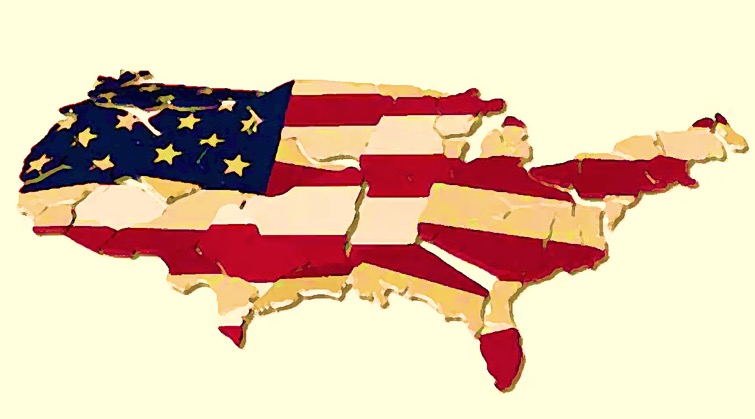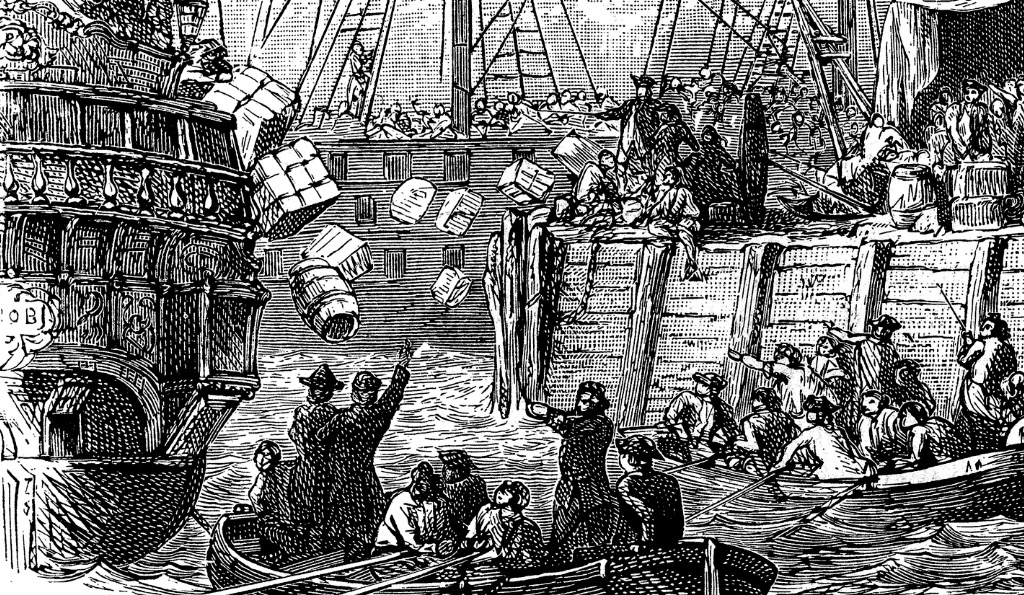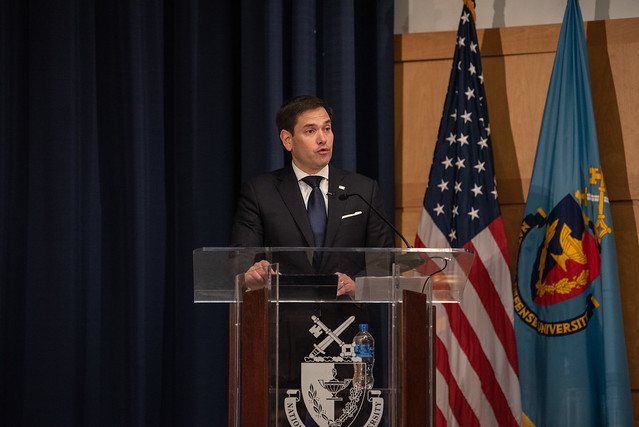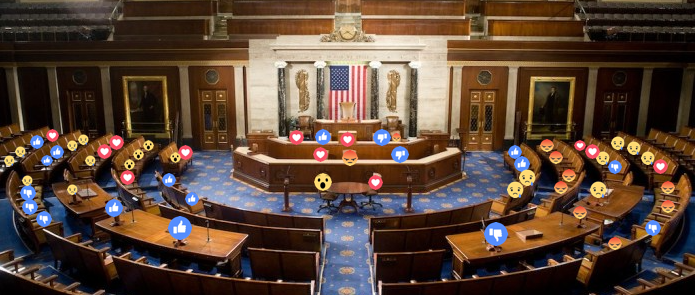A conservative revolution is in order.
As the Electoral College Goes, So Goes the Constitution

Plebiscitary democracy will almost certainly bring much sharper ideological, geographical, racial, and religious divisions.
Editors’ Note: On October 8th, 2019, the constitutional scholar and Claremont McKenna professor of law Michael Uhlmann passed away. A former student of Harry Jaffa and Leo Strauss, Uhlmann was a beloved mentor to many of the best political thinkers and conservative scholars of this generation. He was also a powerful essayist, a senior fellow of the Claremont Institute, and a dear friend to many of us here. He will be sorely missed.
One of Professor Uhlmann’s earliest and greatest triumphs was to defend the Electoral College when it was under dangerous and very forceful attack. In 1970, a proposed amendment to abolish the College had passed the House of Representatives and had a good chance of passing the Senate as well. As a staffer, the young Uhlmann presented a dissenting opinion against the amendment which, as Claremont’s former director of research Glenn Ellmers wrote, “may have been the single most effective force leading to the amendment’s ultimate defeat.” That dissenting opinion is contained in the PDF embedded at the bottom of this page.
In 2001, after the election of George W. Bush and the ferocious contention over Florida’s deciding vote, Professor Uhlmann revised and updated his defense of the Electoral College in an essay for the Claremont Review of Books Winter 2001 issue. With ideological opposition to the Electoral College again reaching a fever pitch, and in commemoration of this great man’s legacy, we reprint the enduring words of his essay here. May he rest in peace.
The 2000 Presidential Election was certainly one for the books. Most of them, alas, will probably be written by professors who believe that the will of the people was thwarted, if not by the Supreme Court, then by an outmoded and undemocratic method of presidential election. President Clinton aided their cause a few weeks ago by questioning both the legitimacy of his successor and the integrity of the High Court. As if on cue, People for the American Way rounded up 585 law professors who, in so many words, accused five justices of betraying their oath of office for partisan reasons.
More along the lines will be forthcoming in the months ahead, as Democratic propagandists construct a mythology of the “stolen” election in preparation for the 2002 and 2004 campaigns. In due course, the Constitution’s provisions for electing presidents will be targeted as an obstacle to the effectuation of popular will. Senator Hillary Rodham Clinton, the late would-be reformer of the nation’s health-care system, has already announced plans to abolish the Electoral College. The usual academic and television network suspects, who will puzzle gravely over why such a “dangerous” and “undemocratic” system continues to be tolerated, will support her in this. Hearings will be held, polls taken, and national salivations will come forth in favor of so-called “direct” election of the president.
I say “so-called” because we already have de facto direct election of the president. Strictly speaking, voters choose only a slate of electors pledged to one of the nominees, but as a practical matter the office of elector might as well not exist. With but a handful of exceptions, electors have faithfully cast their ballots for the popular-vote winner. The “faithless elector” problem (which is easily enough cured in any event) diverts attention from the larger agenda, which is to remove the states from presidential elections. That step would alter our political customs and constitutional order as nothing before.
We must remember that presidential elections are not a thing apart from the rest of our constitutional and political system. Our major political parties came into being, and exist today, for the primary purpose of capturing the presidency. Their structure follows the structure of the Constitution because the Constitution apportions electoral votes to the states and requires a majority of electoral votes to win. Each state has a minimum of three electoral votes, with the larger states having more in proportion to the number of seats to which they are entitled in the House of Representatives. The Electoral College, in short, is organized on precisely the same principle as the United States Congress, and for precisely the same reason. Neither institution recognizes population alone as the exclusive measuring rod for democratic legitimacy.
Because the presidency is connected to the rest of the constitutional system, candidates must think about the unique structure of the nation they seek to lead. And because the states, whether small or large, are the principal presidential battlegrounds, candidates accommodate interests that might otherwise be ignored if the size of the popular vote were the only criterion for election. It is argued that, as the president represents “all the people,” he ought to be elected by the people considered as a single national mass. But that conclusion conveniently ignores the federated nature of the American republic. Campaigning in New Hampshire is very different from campaigning in California, and representing “all the people” means representing them no less as Texans or New Yorkers than as citizens of an undifferentiated whole.
Once the states are removed from the presidential election system, these important and celebrated features of political locale will lose much of their significance. Voters in the less populous states, indeed in any area that cannot be readily subsumed in a mass media market, will be of decidedly secondary importance to presidential candidates. Politicians naturally gravitate toward the largest pool of voters they can find at the lowest cost per voter. That necessarily means the big television markets, where many millions of voters can be reached at a single thrust. Pitching voters in such fashion is expensive, but on a per-capita basis it is the cheapest way to reach voters en masse. To be sure, mass marketing of this sort already occurs, but it is constrained by the necessity of reaching voters outside the big media markets. With a national plebiscite, national television campaigning will become the order of the day. Say good-bye to state caucuses and primaries, even to national conventions to which delegates now come as members of state delegations. Say hello to slick admen and spinmeisters who will care little about voters at the state and local level, except insofar as they can be melded into poll-driven sub-categories of national voter sentiment. Under direct election, the media mavens will not have to leave their offices in New York, Washington, or Los Angeles to run a presidential campaign. Why should they?
As John F. Kennedy said in defending the Electoral College in the 1950s, changing the mode of presidential election affects not only presidential candidates, but the whole solar system of our constitutional and political arrangements—in ways that are difficult to predict but unlikely to be beneficial. With a national plebiscite, the customary ties that bind state and local party units to national campaigns will necessarily dissolve. The national party committees will have to be radically restructured, with state party representatives being displaced by political operatives bearing little or no allegiance to any state. Their loyalties run instead to the personal campaign apparatus of wealthy or powerful candidates.
* * *
All this in the name of guarding against…well, what? We would face a constitutional crisis, it has been said, were a candidate to win a majority of electoral votes while trailing in the popular vote. That appears to have happened in 2000 (assuming, that is, all votes were honestly cast and counted), but the Capitol still stands and President Bush took the oath of office with the applause and good wishes of his fellow citizens echoing in his ears. With the exception of a few discontented demagogues, the public seems satisfied that the result conformed to constitutional proprieties, and that is sufficient for them. The last time this happened was 1888, with much the same result. But an event that occurs once every 100 years or so without imminent peril to the political order is not exactly the stuff of which constitutional crises are made. (In passing, it’s worth noting that no one really knows the actual popular vote count in any of the historical examples cited by opponents of the Electoral College.)
The truth is that the 2000 election was essentially a dead heat. When 100-million ballots are cast and you have to go to the third decimal place to ascertain a winner, the public is unlikely to be alarmed no matter who is declared the victor. What matters to most people is fidelity to constitutional rules and an orderly sense of finality. The “crisis” appears to exist only in the heads of would-be reformers and certain disgruntled Democrats. The anomalies of 2000 aside, the electoral-vote system has regularly produced not only a popular-vote majority or plurality for the winner, but a geographically distributed electoral vote as well. The overall effect has been to transform the winner’s often narrow popular-vote margin into a politically plausible and potentially powerful claim of victory. The next time you hear someone talk about the paramount importance of the popular vote; ask him about Bill Clinton, who entered office in 1993 after having been rejected by 57% of the electorate.
A quick glance at the electoral map helps to explain why the public is not alarmed by President Bush’s lack of “legitimacy”: His electoral-vote majority was razor-thin, but he carried 30 states and five-sixths of the nation’s counties. Conversely, the geographic pattern of Mr. Gore’s state victories was far less dispersed. Although he appears to have won the national popular vote by a slim margin, the map makes clear that his base of support was far less representative of the nation than Mr. Bush’s. His heaviest vote came precisely from those areas dominated by big-city machines and mass television markets. Under direct election, that geographically skewed pattern, dominated by areas of heavy population density, may be sufficient to carry the country, but will it truly reflect the rich diversity of the nation’s interests? Direct election seeks to guarantee that a popular majority will be a relatively accurate microcosm of the country. The Electoral College, by contrast, almost always does.
The Framers understood the limits of simple-minded majoritarianism of the sort embraced by direct election. If elections were simply a matter of counting heads and stopping when you got to 50% plus one, we could dispense with all the checks and balances of the Constitution, including federalism, bicameralism, the separation of powers, and, yes, the Electoral College. The point of these time-honored devices, which are all part of an integral whole, is not to circumvent popular sentiment, but to shape and channel it in ways that support the principal end for which popular government is constituted: to secure the equal rights of all. Majority rule can become majority tyranny, as the wisest thinkers on politics have always known. The trick in establishing popular government is to empower the majority without endangering the rights of minorities. Thomas Jefferson said it well in his First Inaugural Address, following one of the most bitterly contested elections in American history:
All, too, will bear in mind this sacred principle, that though the will of the majority is in all cases to prevail, that will to be rightful must be reasonable; that the minority possess their equal rights, which equal law must protect, and to violate which would be oppression.
Not just any majority will do in a government dedicated to protecting the equal rights of all. One must pay heed not only to the numerical size of a winning coalition, but to the manner of its composition. The Electoral College has been notably successful in producing Jefferson’s reasonable majorities. That is no small accomplishment in a nation of this size and diversity, whose natural tendencies are centrifugal. Political passions run deep and never more so than when one is on the losing side. In losing, we are often heatedly disappointed that our policy preferences must bow to those of the opposition. But even as we rail against our opponents and vow to oust them the next time around, we do not seriously fret that the winning party will endanger our basic rights. Part of the reason is that the electoral-vote system, reinforced by the winner-take-all custom prevailing in 48 states, requires all national candidates to solicit support from most of the same voters. That requirement drives major candidates toward the center while helping to ensure that the winner, once in office, will take care to govern from the center. Winner-take-all also induces interest groups, in turn, to moderate their demands and to accommodate them as best they can to both major parties during and after elections.
A national plebiscite conducted without reference to winner-take-all in the states (indeed, without reference to the states whatsoever) has no mechanism to ensure that the major party candidates will appeal to all or most of the same voters. It cannot even ensure, the way the Electoral College does, that we will have only two major parties; on the contrary, direct election will encourage the formation of all sorts of narrow-interest parties. Direct election has no mechanism, in short, to ensure that the majority coalition will be reasonable, in Jefferson’s sense, either during the campaign or after taking office.
* * *
The United States has never known plebiscitary politics of the sort envisioned by direct election. While it is hard to say for sure, the almost certain result will be much sharper ideological, geographical, racial, and religious divisions. And because direct election will produce a runoff election virtually every time, there will be little incentive for candidates to moderate their stands until after the first vote. Coalitions will be hastily assembled in between the first election and the runoff, but hastily assembled coalitions are also hastily disassembled. A notable and dangerous instability may thus become a permanent feature of American politics under direct election. The Electoral College is not solely responsible for inducing a spirit of moderation and compromise, but it exerts a powerfully moderating influence over candidates’ thought and behavior. By dictating the strategy and rhetoric of campaigns, it guides political ambition into politically constructive channels that at once reflect and reinforce the principles of the regime.
We cannot say for sure what forms presidential ambition will take under direct election, but we know this much: It would be most unwise, even dangerous, to disconnect our chief executive from the rest of our constitutional and political system without compensating for the loss of the Electoral College’s moderating influences. Take another look at the electoral map of 2000 and ask yourself what incentives to compromise would exist under direct election. Ask whether voters in the less populous states would matter in a national campaign that focused almost exclusively on mass media markets. Or consider the Florida imbroglio and ask whether we would be better off if such squabbles took place in dozens of places at once throughout the country, as they almost certainly would under a national plebiscite. Then ask yourself which system would be more likely to contain fraud. (There are approximately 200,000 polling places in the United States. Under direct election, as Everett Dirksen might say, a few votes here, a few votes there, and pretty soon it all adds up.)
Ever since the presidency became a popularly elective office, campaigns have been conducted on a state-by-state basis. Most of our political habits, customs, expectations, and opinions about presidential politics are informed and mediated by the principles of federalism. The same holds true for the candidates, who learn much about this nation’s diversity by being forced to campaign throughout the country—and much also about our unique constitutional system and the political culture it inspires. Once election to the presidency is severed from the rest of our constitutional system, new incentives will be created, and new lessons taught, none of which will have very much to do with the way elections have been conducted in the past. If “the will of the people” is seen as an independent force, separate and apart from the rest of our constitutional structure, how shall we constrain a president who invokes the “moral mandate” of popular will as his reason for ignoring that structure once in office? ![]()
The American Mind presents a range of perspectives. Views are writers’ own and do not necessarily represent those of The Claremont Institute.
The American Mind is a publication of the Claremont Institute, a non-profit 501(c)(3) organization, dedicated to restoring the principles of the American Founding to their rightful, preeminent authority in our national life. Interested in supporting our work? Gifts to the Claremont Institute are tax-deductible.
Senator Marco Rubio speaks at National Defense University on the need for a ‘pro-American industrial policy’ to counter China.
The Future of American Government?
Our K–12 students need guidance out of ignorance.
To beat coronavirus, get Americans back to living natural lives.
Leviathan is hazardous to our health.






